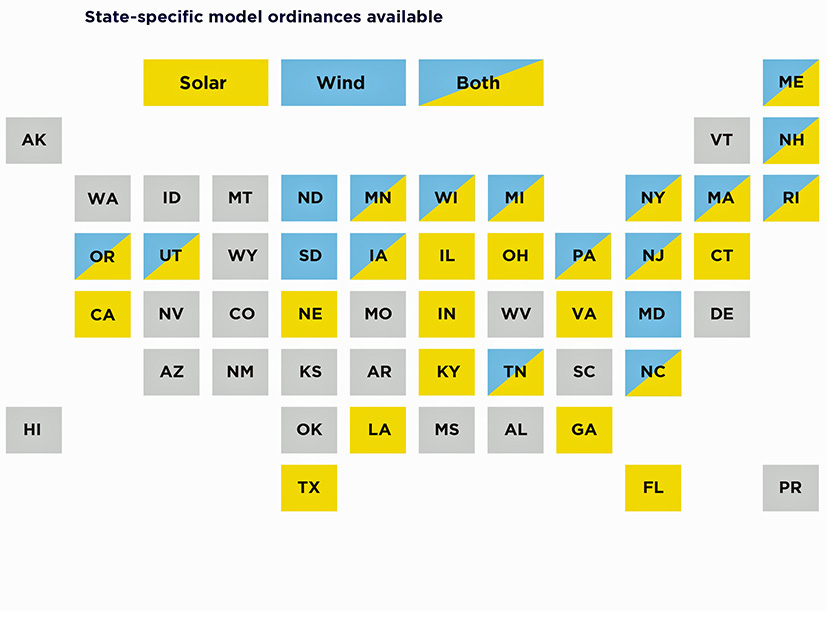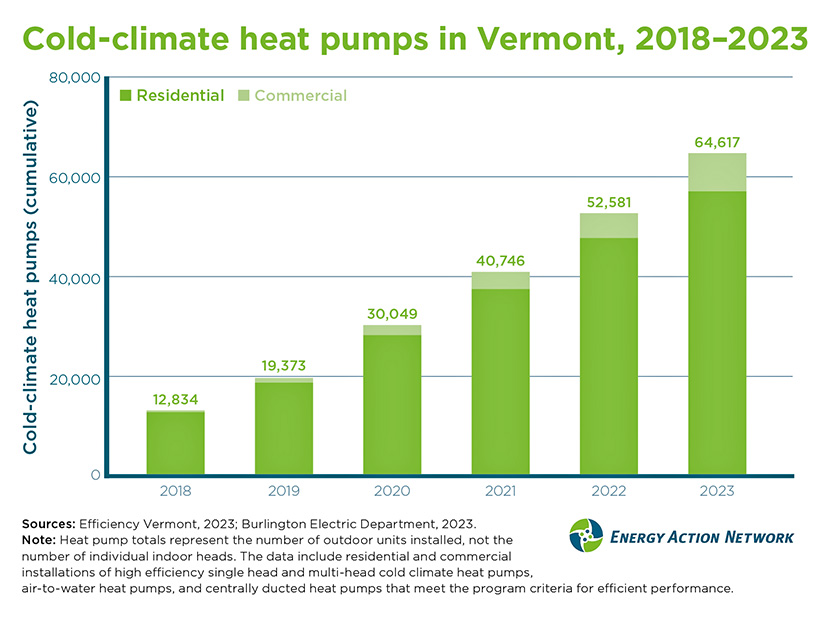FERC has received rehearing requests on Order 1920 ranging from stakeholders who just want to see a few tweaks, to those who prefer the commission trash the entire order and start over.
Many states filed for rehearing on the order, arguing for more authority and flexibility for their efforts to reform transmission planning and cost allocation rules that started before FERC issued its order. (See Order 1920 Rehearing Request from States Seek Bigger Role in Tx Planning.)
The only two RTOs that filed for rehearing also sought flexibility to keep going with the changes they have been working on with stakeholders. PJM seeks to continue with its Long-Term Regional Transmission Planning (LTRTP) process and SPP with its Consolidated Planning Process (CPP).
PJM’s changes would lead to a process where, working with states and other stakeholders, it could come up with scenarios based on evolving concerns such as the changing resource mix and new demand. It was designed to reflect the realities of the RTO’s region, which is “comprised of 14 jurisdictions that have public policy initiatives that are simultaneously overlapping and conflicting — while also taking into consideration the challenges the PJM region is facing as a result of the accelerating energy transition.”
The LTRTP process is meant to deal chiefly with reliability while considering states’ policy requirements in consultation with them. The rule prevents transmission providers from setting up cost allocation methods that separate out reliability, economic and public policies, but PJM said its disparate state membership means it should be exempted from that. The LTRTP process does not align with Order 1920’s requirements perfectly, and some details differ from FERC’s requirements, the RTO said.
“However, PJM believes that the PJM LTRTP process is directionally consistent with the commission’s long-term planning goals, and importantly, the process recognizes PJM’s unique needs and circumstances,” the RTO said.
SPP asked for clarification that it could move forward with a different set of rules around its CPP process.
“The CPP will include a comprehensive long-term assessment that projects supply and demand needs over a 20-year period, incorporating regional and subregional components,” the RTO said. “The CPP will allow for simultaneous planning of transmission, as opposed to the piecemeal approach SPP employs today.”
The new planning process uses a single, common base model for the entire region, it improves data collection, and SPP said it was working on a cost allocation method that would require flexibility from some of Order 1920’s requirements.
The Re-evaluation Requirement
One area transmission owners singled out for review was the requirement that transmission projects be re-evaluated after they’re picked in a regional plan under Order 1920.
It kicks in when projects are delayed long enough to impact reliability, if actual costs significantly exceed estimates, or if some underlying law or policy changes.
The Edison Electric Institute argued that section of the rule was poorly noticed, with FERC pointing to paragraph 248 in the Notice of Proposed Rulemaking. The utility trade group argued that paragraph lacked sufficient detail to count as appropriate notice under the Administrative Procedure Act.
“The onus is on the agency to inform stakeholders that it is considering a proposal put forth in comments; the onus is not on stakeholders to sift through thousands of pages of comments and respond to each one in case the agency should decide to use a particular proposal as the basis for its final rule,” EEI said.
Order 1920 largely takes MISO’s transmission planning process and sets it as the baseline for other regions to implement their own rules around, but a large group of MISO TOs argued that the re-evaluation requirement goes well beyond what they are used to in one key way: The RTO’s “variance analysis” does not require transmission lines to be re-evaluated using new benefits that have been updated since it initially was planned.
The benefit re-evaluation requirement conflicts directly “with the commission’s intended goal of shaping a regulatory environment that facilitates regional transmission development,” the MISO TOs said.
Using new benefits in the updated process creates massive uncertainty for transmission development and basically “requires re-planning every five years,” they added. That increases the risk that transmission will be removed from the plan based on entirely new inputs and assumptions, which can put at risk permits required by other regulators and could implicate projects already under construction.
“Such uncertainty also risks spooking investment in these crucially needed transmission facilities and may delay subsequent portfolios of long-term regional transmission facilities as the resources that would otherwise be used in their development will be used to re-evaluate past portfolios,” the TOs said.
The WIRES Group also told FERC it should reconsider the re-evaluation requirement because it could undermine, by delay or cancellation, the development and timely completion of long-term regional transmission facilities.
Rights of First Refusal
Both WIRES and EEI had the re-imposition of rights of first refusal as a major goal for the order, and FERC did that with projects “right-sized” from the local planning process into the regional planning process, but neither of them brought up the issue in their rehearing filings.
The right-sized ROFR did come under fire from the Electricity Transmission Competition Coalition, the Resale Power Group of Iowa and LS Power Grid.
“Competition in the transmission planning process for the right to develop and construct new transmission facilities reduces costs to consumers and drives efficiencies in project construction,” ETCC said. “The Competition Coalition supports competition and competitive prices to maintain just and reasonable transmission rates, consistent with Order No. 1000’s pro-competition directives.”
Giving incumbent owners a ROFR over transmission projects elevated out of the local planning process was meant to deal with what FERC said were infirmities in those processes. But the rule change is not based on any finding that the current regional planning processes are unjust and unreasonable.
“Nevertheless, in its declaration that [Federal Power Act] Section 206 allows it to act, Order No. 1920 seems to take the position” that it can modify any tariff provision regardless of whether it was found to be is just and reasonable, ETCC said. “There is no statutory or judicial support for such a broad reading of the requirement under the first prong of Section 206 of the Federal Power Act.”
Environmentalists Want Stronger Requirements
A joint filing from “public interest organizations” — including the Environmental Defense Fund, the Environmental Law & Policy Center, the Natural Resources Defense Council, the Sierra Club and the Sustainable FERC project — said they support the general direction of the order and FERC’s goal to efficiently expand the grid.
Order 1920’s changes “represent the lynchpin of the commission’s multi-proceeding reform effort,” and they “applaud the commission’s extensive stakeholder engagement and thoughtful consideration of the nearly 17,000 pages of comments from nearly 200 diverse parties,” the environmentalists said.
But the commission should issue firmer mandates to get around the “inherent economic incentives of transmission providers (and their generation owners)” that lead them to avoid building out transmission to preserve local market power, they argued. FERC should specifically require that transmission planners must plan around access to cheaper generation and cannot discount that benefit.
Clean Energy Trade Groups Request Tweaks
Advanced Energy United, the American Clean Power Association, American Council on Renewable Energy and Solar Energy Industries Association — filing as the “Clean Energy Associations” — supported most of the order, but they filed a request seeking a handful of changes.
The commission was wrong to include interconnection-related upgrades in the short-term process and the new 20-year LTRTP process envisioned in Order 1920, they said. The commission also should change the order by eliminating a requirement that those network upgrades meet minimum voltage thresholds, as its rationale was ambiguous on how transmission providers must determine network upgrades for inclusion in the regional plans, they argued.
The rationale for leaving network upgrades in the short-term plans that still will be run under the Order 1000 process is that they need to be built soon under generators’ interconnection timelines.
“However, the Clean Energy Associations respectfully submit that near-term progress and long-term progress in this area are not mutually exclusive and should be pursued in parallel,” they argued.
Harvard Electricity Law Initiative Backs State Cost Allocation Rights
FERC decided against requiring transmission providers to file state agreements on cost allocation because of the precedent set when Atlantic City Electric sued it over related issues.
But Harvard Law School’s Electricity Law Initiative argued that case applies only to utility filing rights under FPA Section 205. FERC still could make it a requirement under Section 206; not doing that effectively expands Atlantic City’s legal impact.
“Atlantic City does not prevent the commission from amending the pro forma OATT to include a process for filing all regional cost allocation methods approved by relevant state entities, regardless of the transmission provider’s approval,” the Harvard group said. “Imposing a process for filing relevant state entities’ cost allocation methods would not ‘deny [utilities] their right to unilaterally file rate and term changes.’”
The new process would supplement the existing cost allocation processes, whether held by TOs or RTOs. Giving states a guarantee that their work will be given at least a review by the commission would be a marked improvement over what the rule contemplates: states gathering to come up with ideas that the RTO or utilities can reject to use their own cost allocation method instead.
“State regulators might prefer to forgo this process entirely in order to avoid bargaining in the shadow of transmission providers’ veto authority,” the Harvard initiative said. “By placing transmission providers above state officials, the final rule grants utilities leverage over their regulators, potentially interfering with regulators’ duties under state law.”

